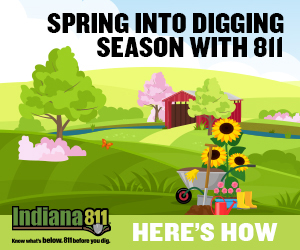Bring Butterflies to Your Garden

We began our love of butterflies as young children, net in hand, chasing after a fluttering butterfly as it goes from flower to flower. When it paused long enough, we captured it and carefully looked at the colors and patterns on its wings. With such beauty, it’s no wonder butterflies are called flying jewels.
To attract more of these amazing insects to your yard, think about planting a butterfly garden this spring. All you have to do is provide them with food, water and a place for shelter and protection.
Pick a sunny open area, and plant lots of any flowers that bloom from spring to fall to provide nectar. However, the adult butterfly doesn’t necessarily eat the same plants as caterpillars. The mother butterfly lays her eggs only on the host plant leaves specific to that species. She places the eggs on the bottom of a leaf hidden from predators. The eggs hatch, and the larvae eat the leaves before making a chrysalis and turning into an adult butterfly.
Butterfly Fun Facts
• A butterfly can fly with half a wing.
• Butterflies can see a range of ultraviolet colors invisible to the human eye.
• Butterflies are the second leading pollinators. (Bees are the first.)
• Indiana has 150 species of butterflies.
• Pesticides have no place in a butterfly garden.
This means you need special “host plants” to provide food for the caterpillars. For example, milkweeds are the only host plants for monarch butterflies. Magnolias, black cherry, wafer ash and tulip trees all attract tiger swallowtails, while their cousins, the zebra swallowtail, use pawpaw trees as larval host plants. Find more plant suggestions for your butterfly garden at monarchwatch.org.
After providing food, you’ll also need to give them a water source. Butterflies can drink from a shallow dish with water and flat stones, a depression filled with sand kept moist or even a nice mud puddle.
They’ll also need a place to hide from wind, rain and predators. Shrubs, a brush pile and evergreens all work for shelter. For butterflies that hibernate in the winter, make sure there’s a pile of leaves or mulch, tree cavities, log mounds, or crevices in tree trunks that they can use to hide during the cold season.
Butterflies, which are cold-blooded, do not fly at 55 degrees or cooler. As part of your habitat, give them a rock to sun on, so they can up warm up their flight muscles for the day.
If you provide plants and conditions for the complete butterfly life cycle, butterflies will likely spend generation after generation in your garden.










 My Indiana Home is produced for Indiana Farm Bureau members. Our mission is to connect you with the food you eat, the Indiana farmers who grow it and a rural lifestyle that is uniquely Hoosier.
My Indiana Home is produced for Indiana Farm Bureau members. Our mission is to connect you with the food you eat, the Indiana farmers who grow it and a rural lifestyle that is uniquely Hoosier.
Aldrich Powe
March 5, 2021 at 11:43 am
I would like to speak with someone regarding creating a butterfly garden in Indianapolis, Indiana.
Dawn
April 27, 2021 at 10:38 am
I am s novice, but I have some common milkweed that attracts lots of butterflies. Last year ( and I will this year, too) I mass planted zinnias, and that also drew many butterflies.
Michelle
May 2, 2021 at 6:11 pm
Lantana (annual, great for pots), bee balm and coneflowers (perennials) are great to attract butterflies.they are hardy too.